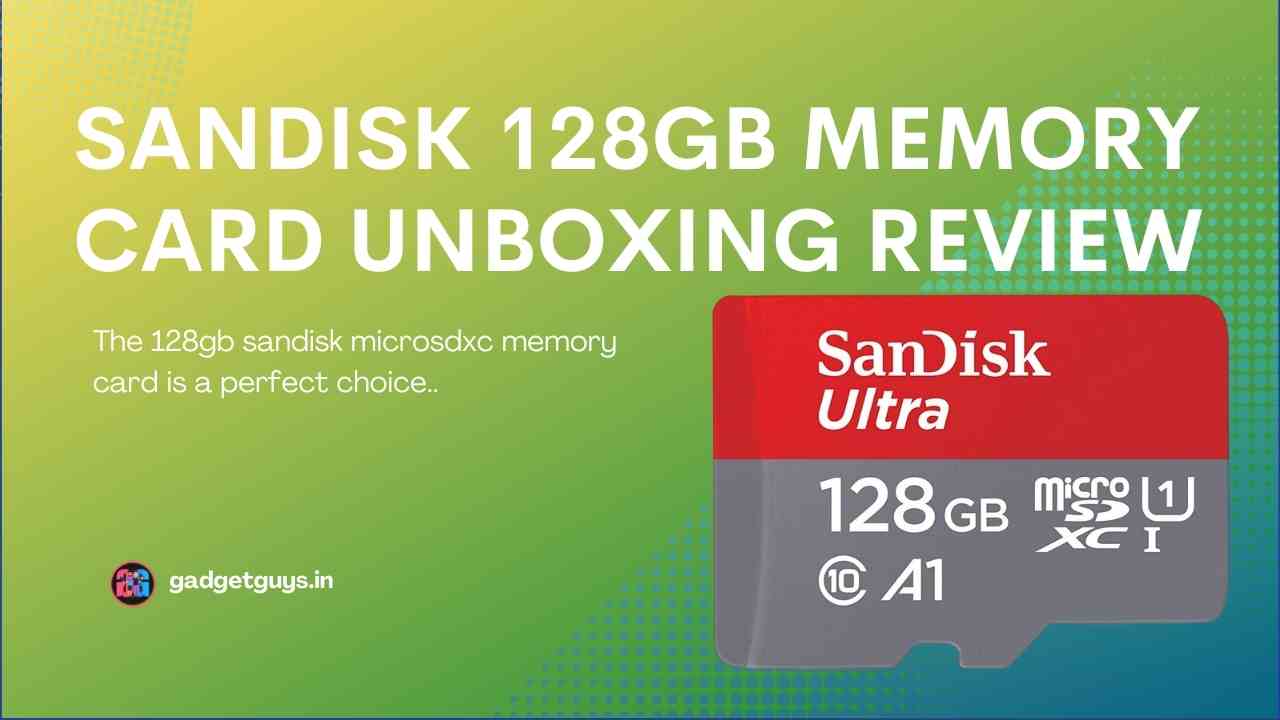In this blog post, we will discuss the SanDisk 128GB Memory Card and do its unboxing and check its practical speed on my phone.
Last year, we saw a 128GB SD card launch for the first time and now we have one on the market in the form of the SanDisk Ultra Dual Drive Duo 16Gb. This time around, we have the SanDisk Ultra Dual Drive Duo 32GB in our hands so let’s see what we can expect.
The SD card is 16GB, which is equivalent to the iPod Touch’s 32GB. The 128GB card has 32GB and 32GB variants, with the latter being even more impressive at 64GB.
With a 128GB card, you can store around 4,700 photos in lossless quality, a variety of HD movies, and even 3D scenes. If you have a large library of movies or other footage, 128GB of storage will be incredibly useful.
Despite the large size, the SanDisk card itself is very slim, coming in at just 40.2 x 43.8 x 6.9mm, and is easily fit in your pocket. It’s a very flexible card, with a tap-open top that is compatible with a 5V/2A power supply, so is ideal for portable use as well as cameras.
The SD card is USB 2.0 compatible, has a maximum write speed of 80MB per second, and has a class 10 standard, making it ideal for the latest smartphones and cameras.
Prices are still to be confirmed, but SanDisk is talking about a UK release of around March 2013, with other markets, including America, Australia, and Europe, to follow.
You’ll be able to pick up the 128GB card in India for around 1200, with the 32GB version at around 700.
TRP Reviews has been using a pre-production sample of the SD card to see what it can do and has given us a hands-on review, so read on for our thoughts on the SanDisk Ultra Dual Drive Duo 32GB Memory Card.
SanDisk has been keen to stress the amount of memory that is still included in the 128GB and 32GB cards. The smallest of the memory cards still has 64GB of memory, which is double that of the 32GB card.
The smallest of the two cards only comes with 1GB of embedded memory, but even then, that’s double the amount of embedded memory that the 32GB card has.
In addition to the 128GB card, SanDisk has also revealed a 100GB version, which is likely to be available as part of the 128GB SD product.
If you are looking to fill your device with 128GB of memory, you may have to make a few sacrifices when it comes to storage. SanDisk has told us that the 32GB card won’t be of many benefits when it comes to performing any functions that involve reading or writing.
We know that you can buy SD cards that are up to 32GB, but SanDisk has stopped short of saying that it has included 32GB of embedded memory in the 32GB card. When it comes to actually playing back photos, you are looking at 512 x 384-pixel resolution.
The cameras that are supported are said to be using the higher resolution 320 x 240-pixel resolution, which isn’t quite as impressive, but it’s certainly a step up from the 480 x 320-pixel resolution offered by the SanDisk 32GB SD card.
Whilst you can’t use the 128GB card with many cameras, SanDisk says that it has found a range of devices that support the high-capacity cards. These include the Samsung Galaxy S3, iPhone 5, Apple iPad Mini, the HTC One (M8), LG G2, Nokia Lumia 1020, and some Nikon and Sony cameras, but not the Samsung Galaxy Note 3.
There’s also an adapter that you can buy for the SD card to work with the cameras that don’t support the 128GB card.
While the 128GB card is touted as the largest available at the moment, SanDisk is already making smaller cards. The SanDisk Ultra Dual Drive Duo 24GB card is available in 24 and 32GB sizes and costs INR 2100 and INR 1500 for the 24GB and 32GB versions.
The 24GB card is identical to the 32GB SD card, but the 32GB card has 32GB of embedded memory, double that of the 32GB card.
There are a few other high-capacity SD cards available, but the SanDisk Ultra Dual Drive Duo has the largest amount of storage, and so has a competitive price.
